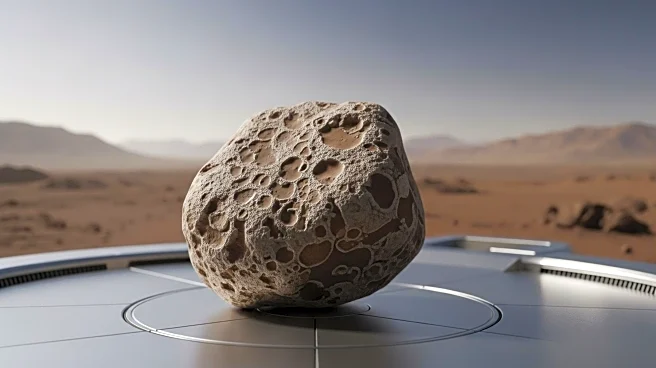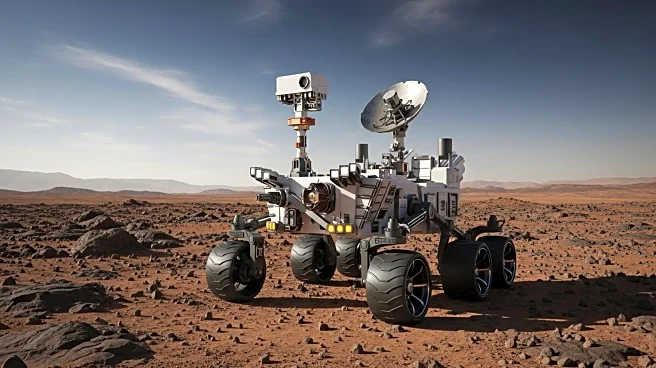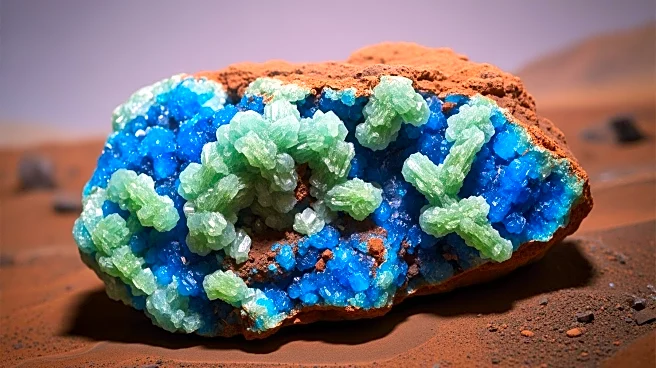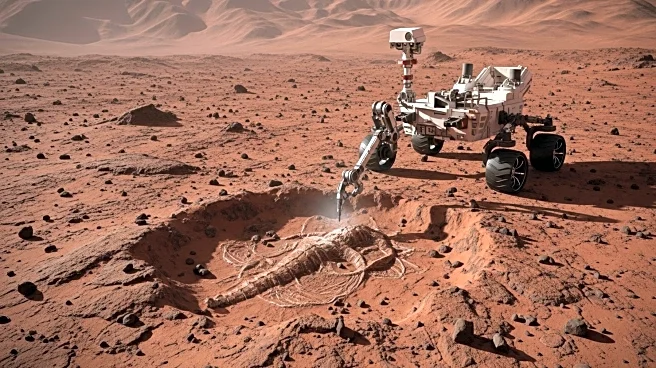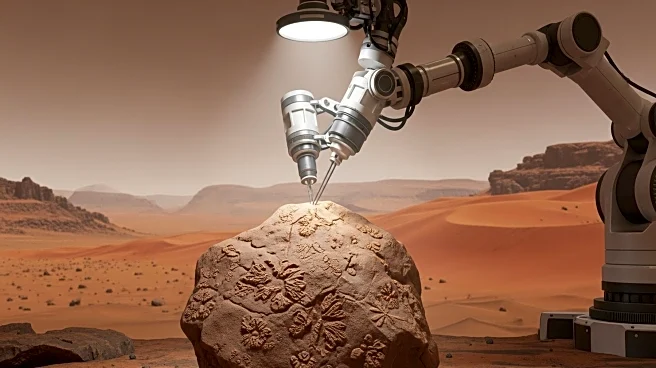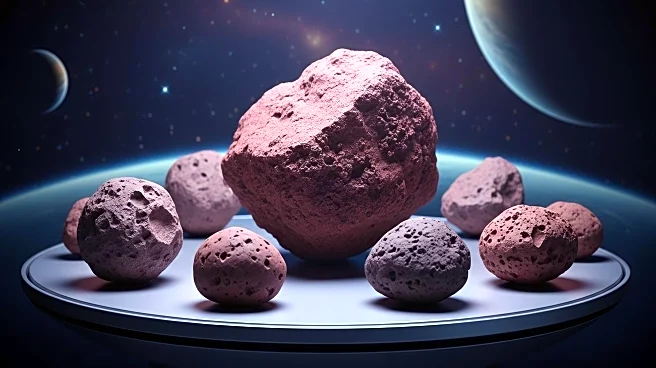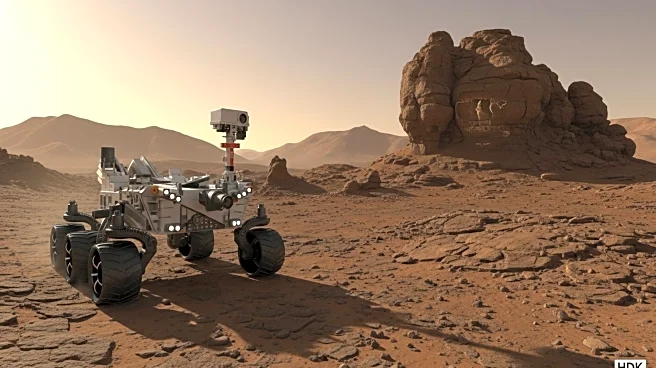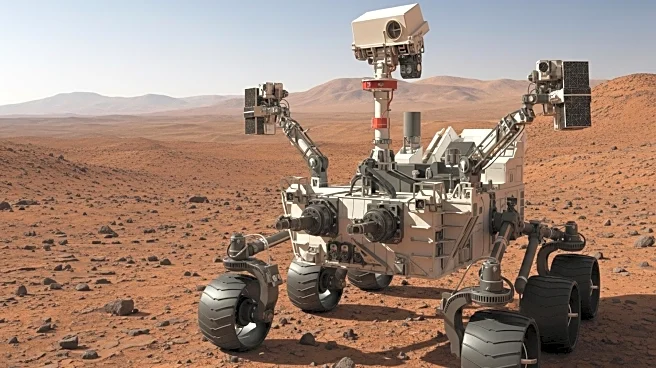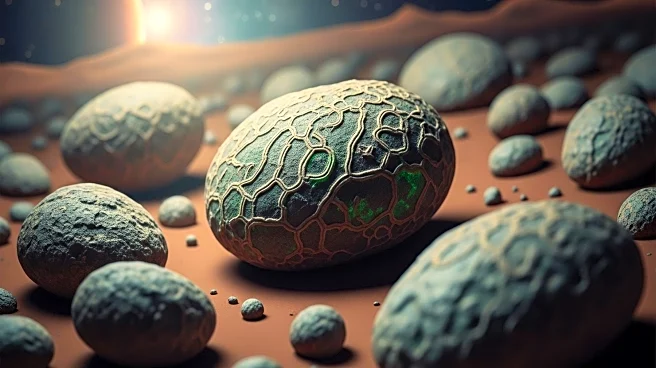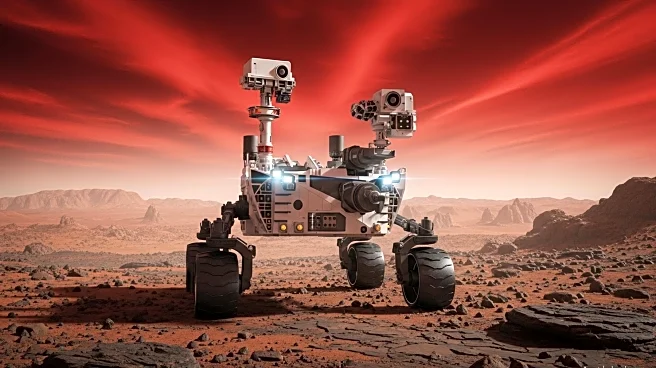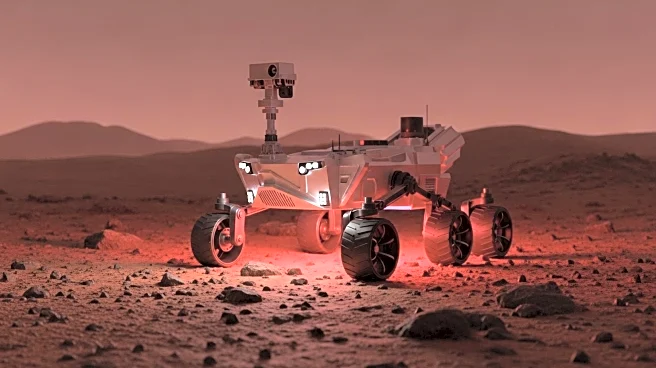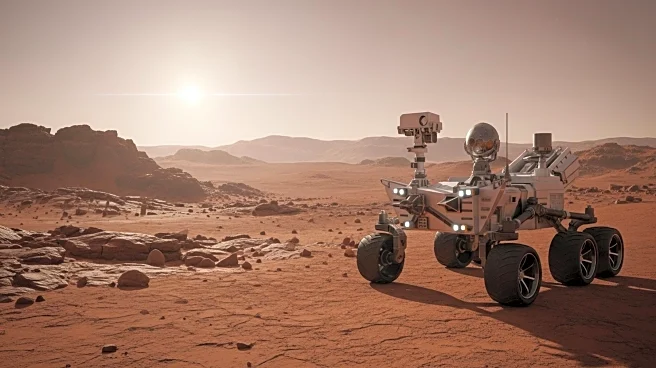What is the story about?
What's Happening?
NASA has announced that a Martian rock sample collected by the Perseverance rover may contain the clearest signs yet of ancient life on Mars. The sample, named Sapphire Canyon, was drilled from a rock called Cheyava Falls in the Neretva Vallis river valley, a region shaped by water over 3 billion years ago. Scientists have identified intriguing leopard spots on the rock, which could be biosignatures indicating past microbial life. The discovery follows a year-long peer-reviewed research process, and further study is needed to confirm the biological origin of these features.
Why It's Important?
This discovery is significant as it brings scientists closer to answering the profound question of whether life ever existed on Mars. The presence of potential biosignatures in the rock sample suggests that Mars may have once harbored conditions suitable for life. If confirmed, this finding could reshape our understanding of life's existence beyond Earth, impacting future space exploration missions and scientific research. The potential for life on Mars also raises questions about the planet's habitability and the possibility of future human colonization.
What's Next?
NASA plans to continue analyzing the geologic context of the sample and conduct additional research in laboratory settings on Earth. The ultimate goal is to return the sample to Earth for more detailed analysis, which would require future missions. However, budget constraints and logistical challenges may impact the timeline for sample return. Scientists are hopeful that bringing the sample back to Earth will allow for more sensitive analysis, potentially confirming the presence of ancient life on Mars.
Beyond the Headlines
The discovery highlights the collaborative efforts of over 1,000 scientists and engineers working on the Perseverance mission. It also underscores the importance of international cooperation in space exploration. Ethical considerations regarding planetary protection and contamination will be crucial as scientists explore the possibility of life on Mars.
AI Generated Content
Do you find this article useful?
